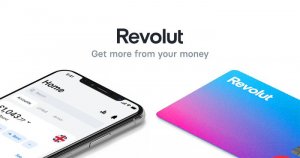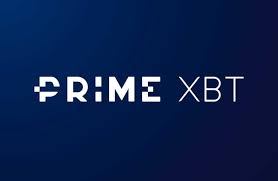Crypto Collateral on Loans Can be Prohibitively High; Here’s How to Fix It
For those investors who are “Holding”—from the enthusiastic novice to the whale with a diverse crypto portfolio—one issue of buying and keeping crypto is that of liquidity.

While we would all like to have enough wealth to dump massive amounts into crypto and still have plenty of fiat for things like starting businesses, buying homes/cars, or sending children to college—sometimes it just isn’t feasible. The challenge for crypto believers is achieving the optimum balance where they can invest as much as possible into crypto, but maintain enough fiat liquidity to pursue other purchases, expenses, and investments. If the crypto investment is too aggressive, they might have to sell a portion suddenly to pay for an expense, and they may get caught when their token values have dipped. If they are too conservative, they might set aside more fiat than needed and miss out on a major token value increase.
One potential solution that has emerged is the crypto loan model. Essentially, investors can place crypto up as collateral for a fiat loan, and ideally have the best of both worlds. This seems like a great solution, and it certainly can be, but as with all things, the devil is in the details. Let’s examine some key benefits and drawbacks of crypto loans, exploring why they really can solve the crypto/fiat balance dilemma. We will look at what conditions have to be in line for the best-case scenario to happen, and what the consequences are if a crypto loan goes wrong. Specifically, let’s look at the biggest drawback of crypto loans—the 2x-3x collateral required—and how interesting tweaks to the model, such as Roobic’s lending structure, may be able to alleviate the problem.
Crypto Loans Pros and Cons
Crypto loans can be very effective in providing liquidity to crypto holders without their having to sell tokens. As long as the token values are relatively steady, using loans can open the door to those who need the cash and can eventually pay it back. There are additional perks to crypto loans that make them extremely desirable to borrowers. Unlike a traditional loan, a crypto loan doesn’t need a credit check. This is a game-changer to those with no or bad credit and maybe the only way to secure a loan for some. Many loans can provide cash the same day, which is astounding when compared to the weeks and sometimes even months required for traditional loans. The most telling benefit—even to those with great credit who don’t need the cash immediately—is that many crypto loans have low-interest rates; and some even offer a 0% interest rate.
This last point may cause you to wonder just how these lenders make money. And you are right to wonder this because, unlike a traditional loan, the interest earned is not the key revenue for lenders. Instead, these lenders provide loans to their clients because there is a chance they will be able to collect the collateral involved if market conditions are right. That’s because crypto loans are secured by collateral in the form of crypto tokens. Unlike a loan for a home, where the house is the collateral and has a strong chance of keeping or increasing its value over time, crypto tokens can fluctuate wildly. A token can drop half its value overnight, and for no discernible reason. Because of this, lenders want to make sure the collateral can cover the loan amount with high probability and will demand 2-3 times the loan value in crypto equivalent value.
This is where the highest risk for borrowers—and the biggest revenue opportunity for lenders—rises to the surface. Part of the crypto loan contract states that if the collateral value drops below a certain point, the borrower must immediately pledge additional crypto as collateral in order to cover the loan value. If the borrower can’t provide this, the collateral is forfeited and additional penalties can be applied. The fluctuating prices and large potential losses make crypto loans seem less like the perfect loan and more of a high-risk way to get cash—losing crypto and fiat alike, simply because the unpredictable crypto market dives, even for a short period.
A Possible Solution to High-Risk Crypto Loans
To sum up so far, crypto loans can be amazing because of no credit checks, same day cash, and low/no interest rates. They can be a disaster if your 2-3x worth of crypto collateral drops past a certain point and is forfeited to the lender. At this point, many “basics of crypto loans” articles will direct their readers to safer alternatives such as credit union loans, 0% credit cards, or secured loans with more stable collateral. But none of these addresses the needs of an investor who wants to make use of their crypto investment. Does that mean crypto investors are stuck with 2-3x collateral? Well, according to loan platform Roobic, perhaps not.
Roobic’s lending philosophy is less conventional than most platforms because it has developed what could be described as market making for crypto loans. Instead of requiring very high collateral for all loans to minimize its risk, it allows lenders to reach borrowers based on their loan terms. If a lender wants to provide a loan for someone requesting it, they get to decide on how much collateral is required. This may be higher for collateral based on extra volatile tokens, but might be much smaller if the lender is motivated to find a borrower and is comfortable with lower collateral. The key is that lenders and borrowers can find a match, and a much wider range of loans can be successfully deployed, potentially improving the market overall.
Wrapping Up
Crypto loans are a new way to have your crypto and at the same time put it to work through collateralized borrowing. With many benefits such as getting the cash quickly, no credit checks, and low to no interest, there is a lot to like. However, the sticking point of 2-3x collateral on crypto tokens can be too steep a risk for many. Will Roobic’s solution of matching borrowers and lenders based on collateral amounts create more value for the larger crypto economy? It’s too soon to tell, but the concept is interesting enough to keep an eye on and may become a new opportunity to both borrowers who want to risk less collateral, and individual lenders who want to jump into the market but don’t have the infrastructure to attract borrowers. With any luck, this is another representative step toward making the larger crypto industry an open market, decentralized, and revolutionary global economy.









